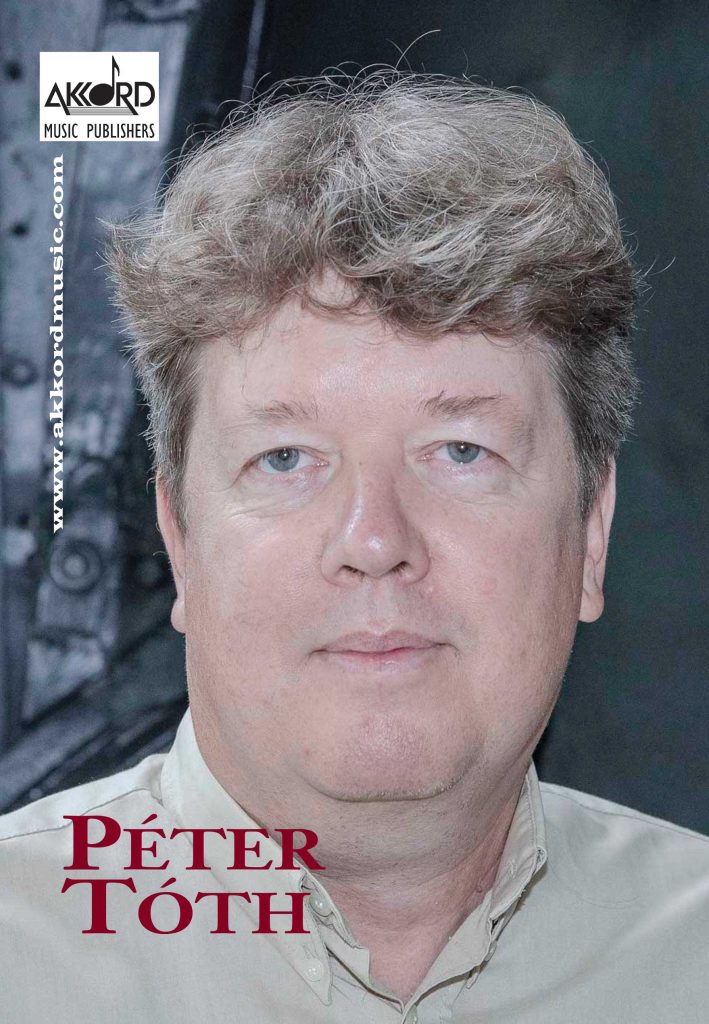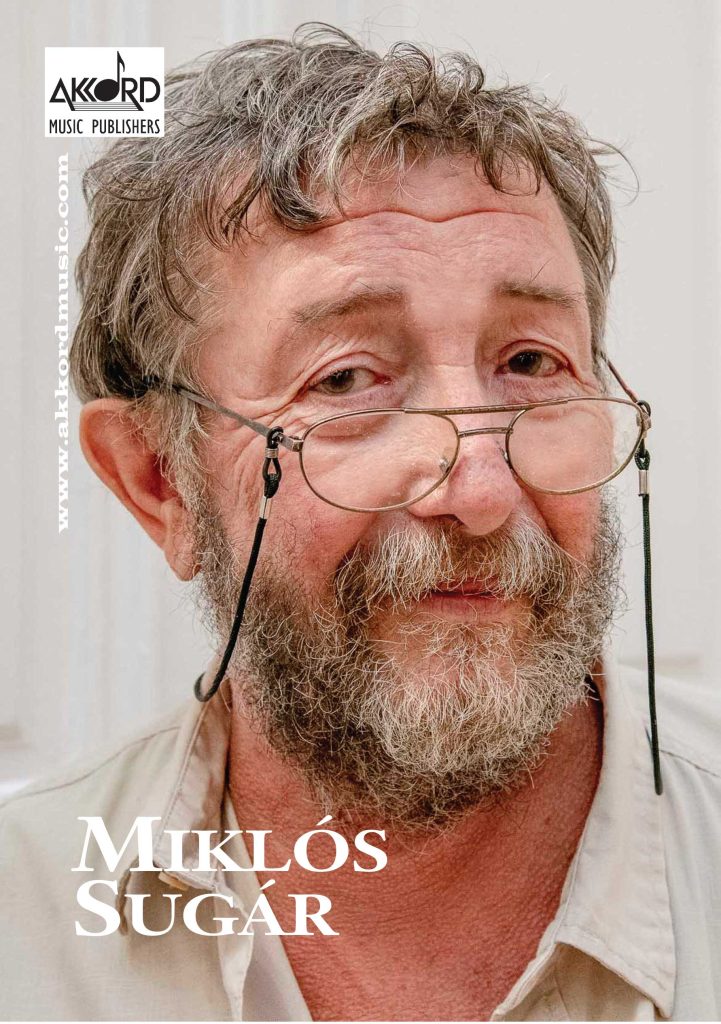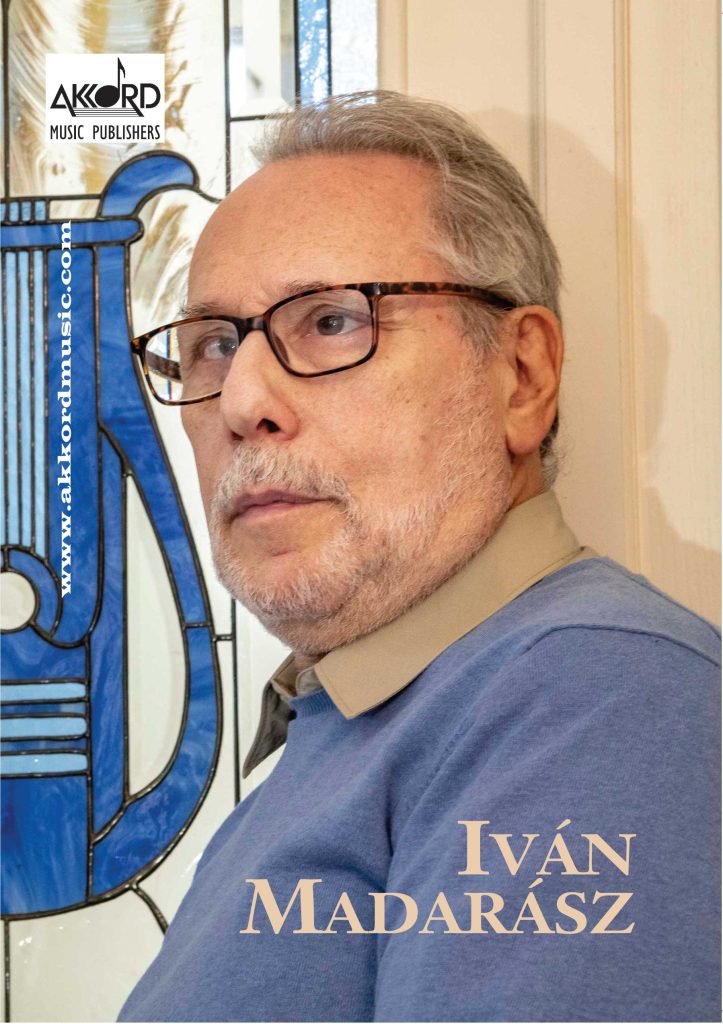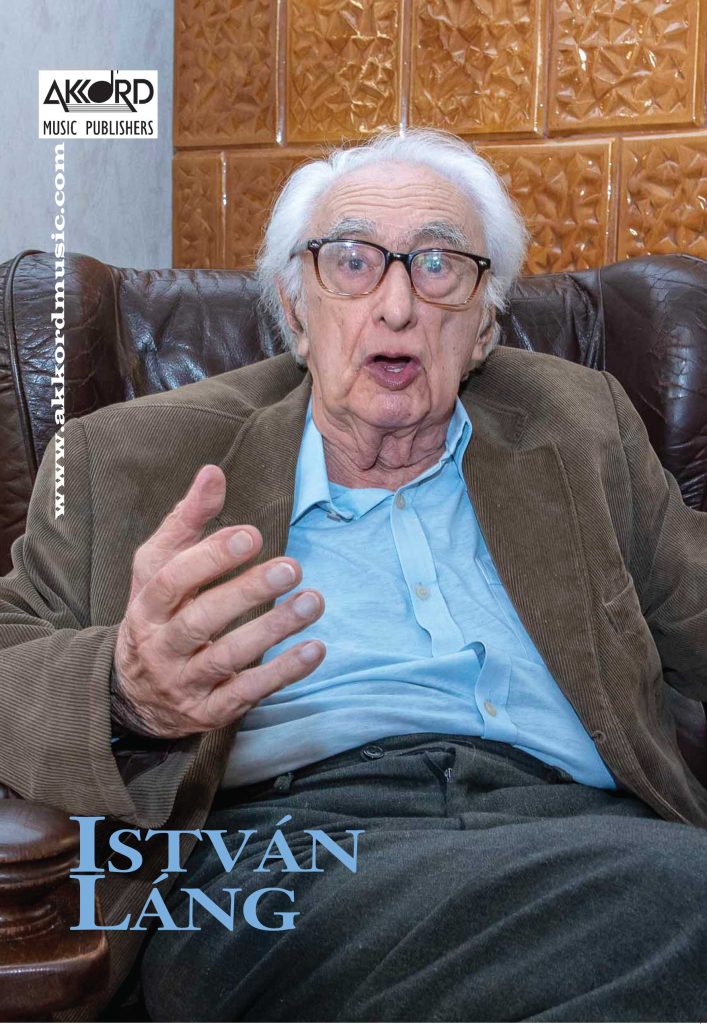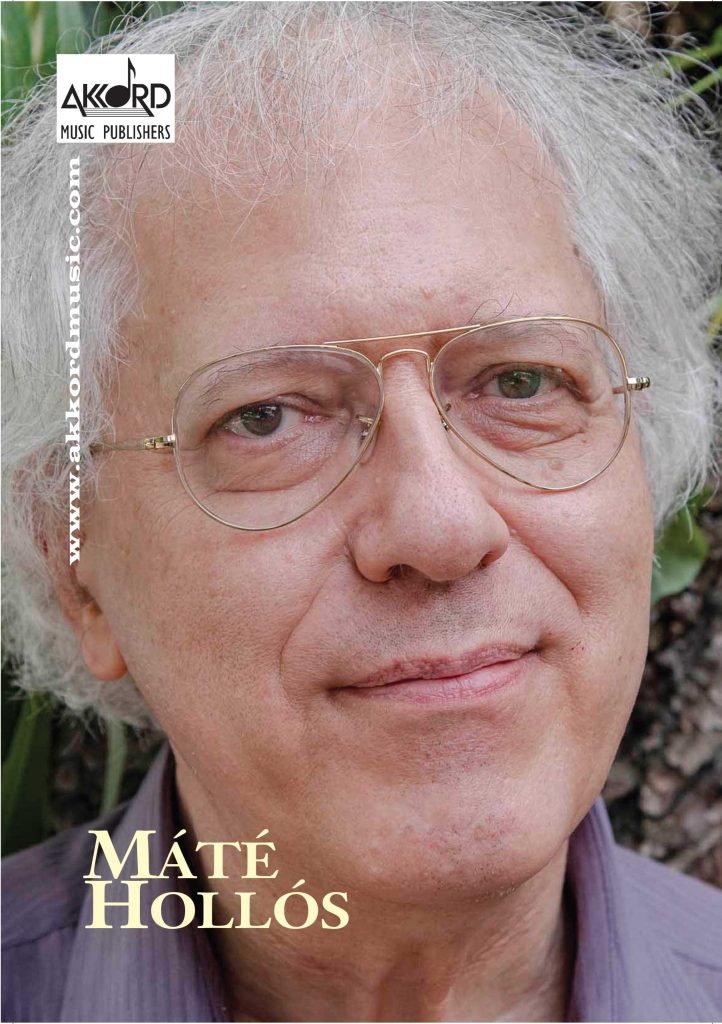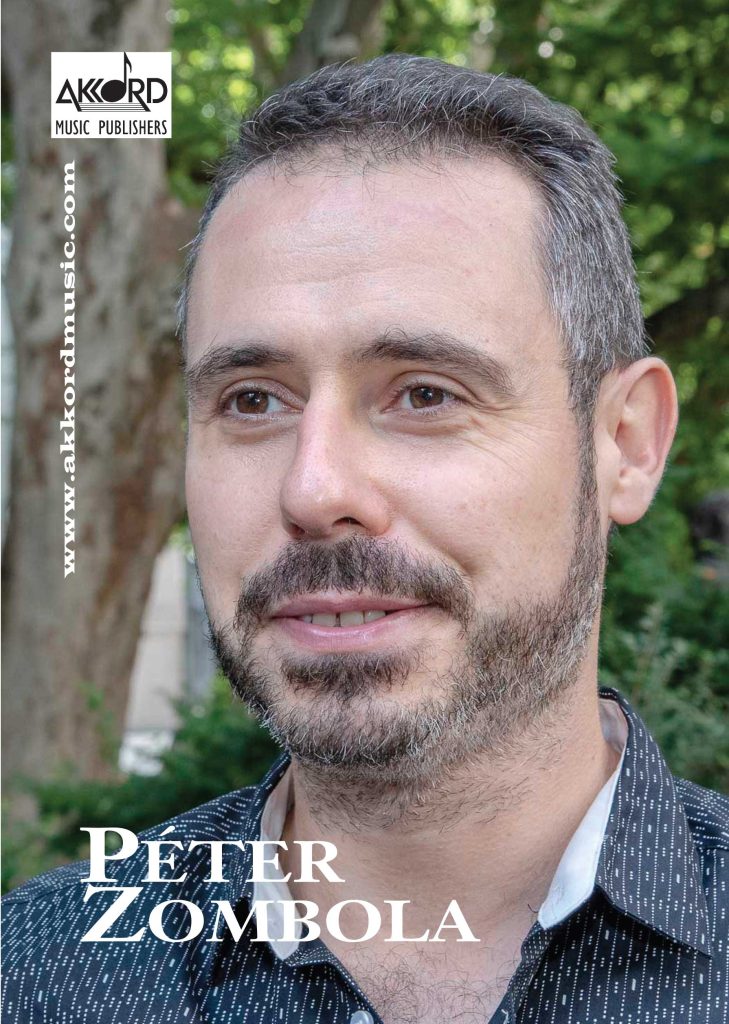 View Large
View Large
József Sári (b. 1935) studied at the Liszt Academy of Music in Budapest from 1954 to 1962. He studied composition with Endre Szervánszky and choral conducting with Zoltán Vásárhelyi. He first worked as a music teacher and piano accompanist, led a chamber orchestra and gave educational talks on music. Between 1971 and 1984 he lived in West Germany where he worked as a teacher and a freelance composer. From 1984 he taught music theory in the Bartók Secondary School for Music in Budapest, then at the Liszt Academy of Music where he was head of the theory department from 1992 to 1997. He habilitated in 1997 at the Liszt Academy. From 1997 to 2007 he worked as contemporary music lector of the Hungarian Radio. Since 1998 he has been full member of the Széchenyi Academy for Literature and Arts. The première of his opera, Sonnenfinsternis, commissioned by the Theatre of Pforzheim, was held in Pforzheim (2000). In 2000– 2001 he was scholarship holder of the International Artists’House Villa Concordia in Bamberg. He was guest professor of the composition master course at the Summer Academy of Universität für Musik Wien (Reichenau, 2001).
Throughout his career, József Sári has received a large number of awards. He received the Internationaler Arbeitkreis für Musik Prize in Kassel (1984), the Bärenreiter Hausmusik Prize – also in Kassel (1985), the Erkel Prize (1991), the Bartók–Pásztory Award (1995 and 2005), the Artisjus Prize and the Kossuth Prize (2009). He composed mostly instrumental solos, chamber music and orchestral pieces. He also wrote two operas both commissioned in Germany. His first opera, Sonnenfinsternis, is about the Budapest born Arthur Koestler, the other was written on the short story, The Hatmaker by Thomas Bernhard.
Akkord Music Publishers offer an exciting selection of pieces for the flute by Sári. The volume Six Concert Pieces for Flute contains solo works. The music starts with an acoustic fingering chart, elaborated by István Matuz and described by Gergely Ittzés. This is followed by Sári’s apologia and the editorial notes of Gergely Ittzés, who frequently performs Sári’s works and who undertook the edition of the volume. The notes are both in Hungarian and English. The composer writes of his works for the flute: “the music does not compromise – they are happily virtuoso concert pieces”, and he also emphasizes the presence of traditional stylistic features (such as structures built on thirds and the role of arpeggiated triads) and the use of free twelve-tone technique. Arion’s Song (1989) and the piece for bass flute, The Dolphin’s Journey (1992) may be performed simultaneously but Arion’s Song also functions as a three-part canon. In the course of elaborating the voices the composer paid attention to both the harmonies and the independent, linear process. In Soledad (1995) multiphonics play an important role. All three works were dedicated to Zoltán Gyöngyössy. Legend (1995), written for Gergely Ittzés, has a structure built on a dodecaphone row. This piece is made especially brilliant by the use of special techniques such as multiphonics, slap tongue (or pizzicato) and timbre trills. Impetus (2003) is characterized by a perpetuum mobile-like motion, and AIR, subtitled For the convalescence of a patient (2011) is a prayer of thanksgiving for the recovery of his wife. Another volume edited by Ittzés contains Novellette No. 8 (2014), Epigraph (2012), composed in memory of Zoltán Gyöngyössy and Bird Song at Sunset (2014) composed for the piccolo. As Gergely Ittzés stated in his introduction to the Six Concert Pieces: “Since each composer today devises his own notational system, the performer has to be on his guard even when reading traditional-looking scores. Sári uses several notational elements of his own. For this reason, even if the intention behind the notations seems to be unambiguous, it is worth adding some humble explanatory notes – with the composer’s approval – to Sári’s most characteristic stylistic features. This may perhaps help in understanding more exactly the scheme of gestures he experiences music in.”
Canons for homogeneous instruments, also edited by Ittzés for Akkord and supplied with endnotes, is a collection of three- and four-voice canons. Owing to the preference for mild dissonances the pieces sound “beautiful” in the classical sense but also follow contemporary trends. The performer’s freedom is of primary importance in these pieces. This freedom, however, does not mean improvisatory elements, so it is valid mostly during the stage of preparation, not in the course of performance. The canons of Mill of Time give the players liberty not only in choosing their instrument but also in the opportunity to use their imagination concerning the order of entries of the voices. A tutti beginning is also possible, so in this case the parts will exit gradually. Axiom is a four-part canon composed for István Matuz. Farewell from Glenn Gould (1983) comprises two short four-voice canons which follow each other attacca and, considering the entries of the voices, they are mirrors of each other. The canons may be performed on any melodic instrument, in any transposition. The only requirement is that the instruments should be homogeneou.

The flute duo, Nuptial music (1996, revised in 1997 and 2003) was composed for the wedding of Gergely Ittzés and his flautist bride, Zsuzsanna Szűcs. It can be also performed by two clarinets. It is suggested that the piece be performed in a church or other surroundings with a good echo, or alternatively an echo should be electronically created. Praeludium (2010) for two flutes, employing baroque stylistic elements, was also composed for a married couple, Ákos Dratsay and Bea Berényi. The next piece in the volume is In memoriam T. E. (2003) which evokes the memory of the flautist Tihamér Elek, who died in 2001. Dedicated to Zoltán Gyöngyössy and István Matuz, Scenes (1988) is a flute duo, whose five movements contain music historical and mythological references alike. (The Prayer of Leporello, Hommage à Gy. Ligeti, The Twilight not just of the Gods, The Emergence of the vicious circle, Star Hour).
The volume Four Concert Pieces for Clarinet contains solo works similar in length and character to the flute pieces. In the foreword to the music the composer reveals the meanings of the titles. Valet (2001) is a farewell to Endre Szervánszky, Sári’s composition teacher at the Academy of Music, Sententiola (2004) proved its versatility when it was used as the fundamental idea behind an inventively structured clarinet concerto and several other contemporary works for which it also served as the basic idea. The works were presented in a large-scale concert in 2008. Novellette No. 4/B (2002) and Novellette No. 6 (2007–2008) are pieces of a series for solo instruments: No. 4/B is the arrangement of No. 4, originally composed for the bassoon, and No. 6 was written for bass clarinet.
The publication of trombone pieces contains Novellette No. 3 (2002), and Ananta (1983, rev. 1991) which makes ample use of modern instrumental techniques. Its chorale-like ending recalls Bach’s art. Among the works for brass ensemble is Transformations of Don Genaro (1995) which employs three trumpets (or two trumpets and a horn), three trombones and a tuba. The four movements were performed at the Budapest Autumn Festival in 2001 as part of an exciting musical happening. It even lent its title to the whole “composed concert” and “musical process”. Another Sári work, dedicated to Brass in the Five and composed in memory of Sándor Végh, …es ist vollendet (1997), was also performed at this concert.

Among Sári’s works for the violin, the first piece of Four Paraphrases (2017) was dedicated to a composer colleague, János Decsényi, on the occasion of his 90th birthday. Rhapsody (2012), dedicated to Eszter Lázár, is a substantial work summarizing musical ideas on a large scale. The volume of works for cello contains a duo and four solo pieces. Prologue (2013) was composed for Csaba and Zoltán Onczay. After the introduction it seems as if the parts represented the characters of two different personali-

ties: one plays a melody in a wide register, the other adds restless, rapid accompanying figurations. Bildnis (2013) is a portrait, painted with passionate colours. Elegy (2005), dedicated to Miklós Perényi, was commissioned by the Hungarian Radio for the 125th birthday anniversary of Béla Bartók. Confabulation (2014) traces the process of the slow change of the opening motive through the continuous alternation and variation of two musical ideas (Andante con moto and Animato), employing epic and dramatic elements. Labyrinth (2015) uses the twelve-tone technique. Its middle section (Meno mosso) begins the row with the notes Bb-A-C-B [B-A-C-H].
Works for pedagogical purposes accessible by music school students make up a separate group. Ghiribizzi (1982) is a series of short, striking pieces, whose titles and the musical solutions of the movements bring music historical models close to the young performers. (Bartók’s Pocket Watch, When Stravinsky Was Still a Child…, The Knife-grinder, The Weathercock, Fallen Leaves, Mobile sine perpetuo, Self-portrait). Nine Dwarves (1983), as shown by its title, has nine movements, each of which presents a character in the length of a few bars, fit for a dwarf. Six Paragrams

(1992) has German titles and each title contains some letters which also designate musical notes. These were placed in the title with musical notation. This is how the movements are built on the given group of notes. (Mr CAGE sammelt Pilze, Lava und ASCHE speiende Vulkan, Tanz der blauen FEE, ABBÉ Pierre plaudert mit dem Wind, Ein Fremder in ADDIS ABEBA, ADE).
We can regularly trace Sári’s esteem for Bach in the musical expressions of his works: in melodic or rhythmic counterpoint, or in the frequent use of figurations evoking virtuosic elements of baroque music. An eminent example of this phenomenon is Alienated Quotations (1982), a ten-minute-long piano piece partly for prepared piano, dedicated to Ádám Fellegi. “The work has three movements and, although not a note of it is mine, I still consider it as my own, fully independent work”, the composer wrote. “The first and second movements are based on the A minor Prelude in Book 2 of Bach’s Das Wohltemperierte Klavier, while the third movement is based on the E minor Fugue in Book 1. My method of composition was to use only the notes I needed from these pieces. The ‘recycled’ notes are linked together either by means of pauses or by extending the earlier note, occasionally with changes to its rhythm. Each tone is heard at exactly the same point as in the Bach original. […] The use of a prepared piano in places also contributes to the effect of alienation”, commented the author on his work. From bar 43 of the third movement the original Bach fugue in E minor is played simultaneously on another piano, if possible, or from a recording. Frag-mente (1982) was composed in the same year. It was written for the opening of an exhibition and the titles are alienated wordplays. The fivemovement cycle for soprano voice and violin was written on words in German by the composer himself, recalling the absurd theatre. In the breaks between the songs, percussion instruments are used (claves, triangle, cow bell).
Written by Viktória Ozsvárt,
translated by Kata Ittzés



